#Chicano art
Text
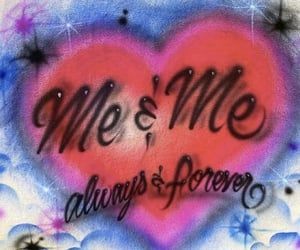
#truly#girlblog#girlblogger#girlblogging#pinterest#weheartit#chicano#chicano art#divine feminine#female experience#it girl#just girly thoughts#female manipulator#y2k
3K notes
·
View notes
Text

quick one amor mio
479 notes
·
View notes
Text
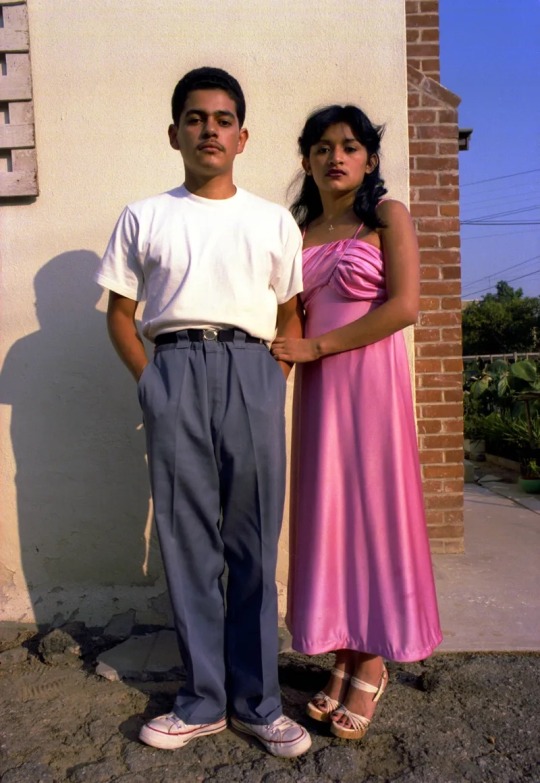
John Valadez, Couple Balam, 1978/80
#🩻#John Valadez#1970s#1980s#los angeles#chicana#chicano#east la#socal#veteranas#brown pride#photography#mexican american#xicana#west coast#history#latin american history#chicano movement#chicano art#arte latinoamericano#arte mexicano
114 notes
·
View notes
Text

Joe Hill, Carlos A. Cortéz, 1979
Linocut on paper
35 x 23 ¼ in. (88.9 x 59 cm)
Smithsonian American Art Museum, Washington, DC, USA
#art#carlos a cortez#1970s#20th century#linocut#print#joe hill#smithsonian american art museum#american#chicano art#artists of color#political art#labor rights#industrial workers of the world#labor unions#portrait
85 notes
·
View notes
Text

“El Niño” 36”x24” oil on canvas by Jake Prendez 2023
Photo reference by Gus Mejia
56 notes
·
View notes
Text
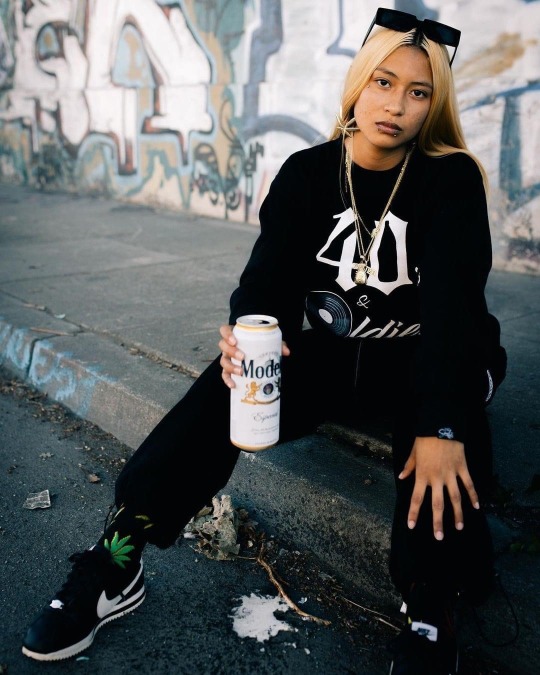
youtube
#hiphop#rap#music#evil enterprise#chicano rap#cholostyle#barrio#chicano#arte#chola#chicano art#lowrider#mexican#cholo#hiphop blog#graphic design#hdr#recording studio#studio#actor#wallpaper#sureno#southside#westcoast#houston#texas#houstontx#Youtube
21 notes
·
View notes
Text
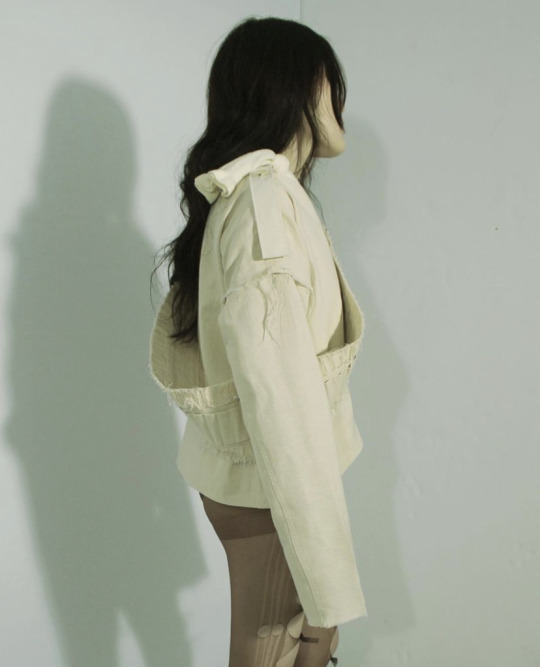

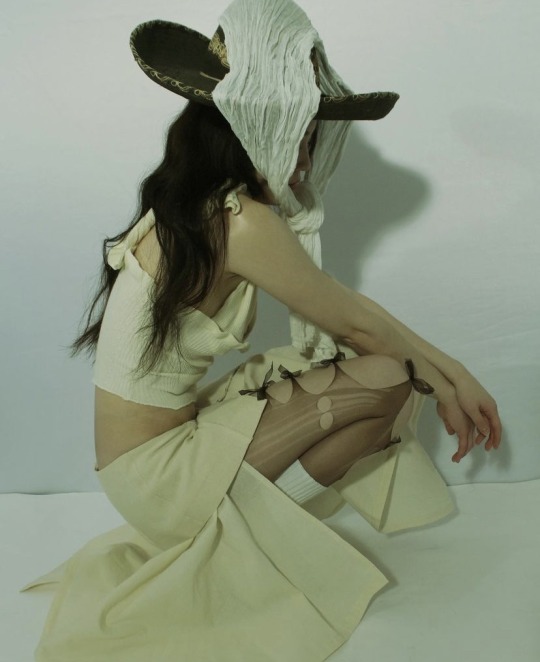
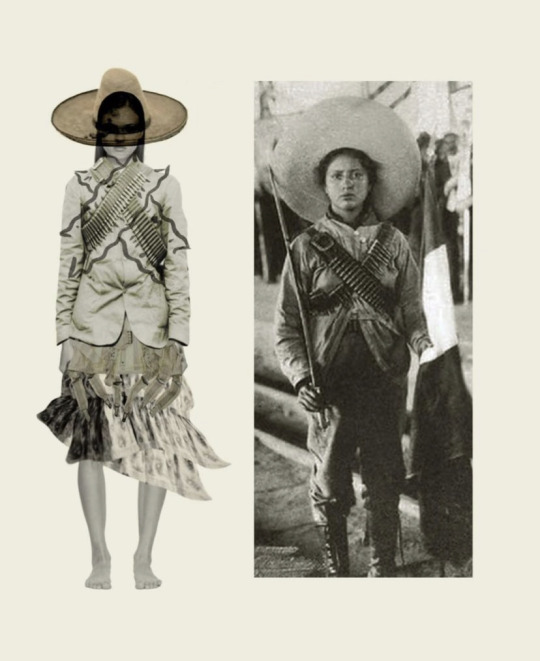

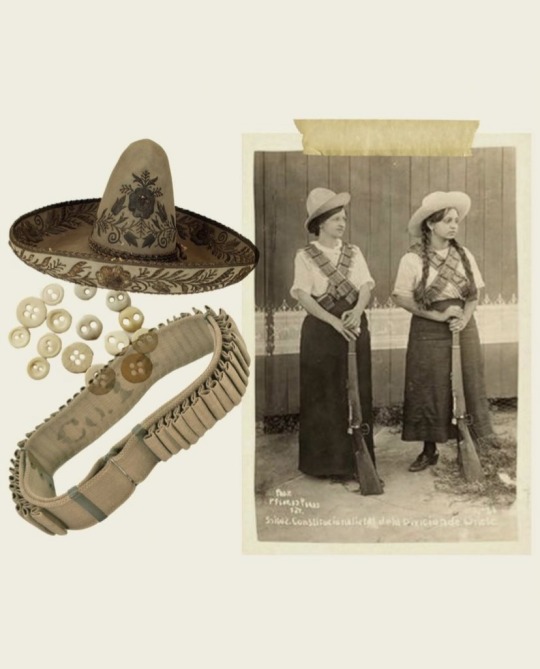
Chavarri S/S ‘23
Samples inspired by Las Soldaderas of the Mexican Revolution.
Paired with an antique Mexican Sombrero from the early 1900s.
"Those that fail to learn from history are doomed to repeat it"
Model: @emilyeanae
#chavarri#s/s 2023#ready to wear#sombrero#mexican fashion#Chicano art#Chicano fashion#vintage photos#mexican revolution#soldaderas#la adelita
68 notes
·
View notes
Text

Transparent Migrations, by Amalia Mesa-Bains.
#amalia mesa-bains#transparent migrations#chicano art#art#whimsical#trinkets#glass#whimsy#whimsigoth#gothic#vanity
16 notes
·
View notes
Text
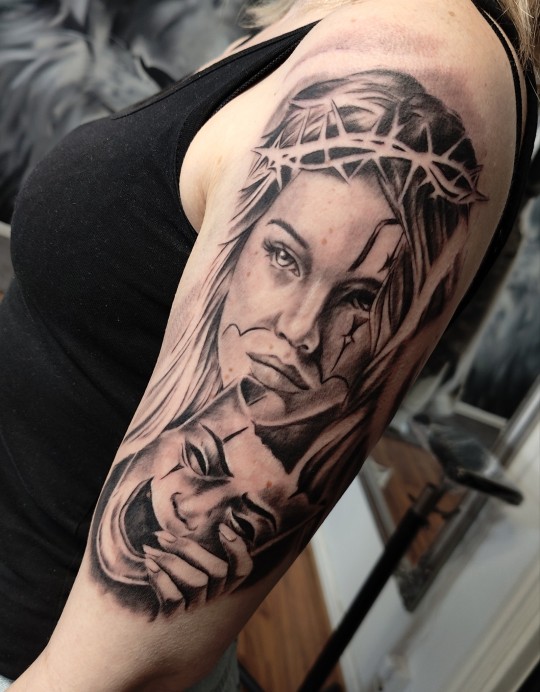
#Mask#tattoo#behind mask#female tattoo#inked#chicano art#black and grey#inked lifestyle#tattooed#Spotify
8 notes
·
View notes
Text
CHICANO ART MOVEMENT: “Las Manos de Aztlán” art talk with Emmanuel C. Montoya 2023/2024

(Social media capture of Montoya print sale.)
In early May 2023, the Apachicano artist Emmanuel C. Montoya, Bay Area creative, announced through his social media the availability to purchase his vintage prints. For Robert, it was the prime opportunity to add an artwork by Montoya who for many years has dedicated himself as an artist to the Chicana/Chicano community. Within a few moments and with technology’s help, we were in direct contact with Emmanuel and became patrons to the piece titled “Las Manos de Aztlán” - a linocut print measuring 16 inches by 17 inches and was specifically made for the Chicana/Chicano students and faculty on the campus of University of California at Santa Cruz in 1989.
A few weeks later and upon the arrival of the print, we unrolled to survey the “Las Manos de Aztlán” piece and were very intrigued to learn more about it. We messaged Montoya regarding the safe arrival of his artwork and inquired if he was available to answer a few questions about the piece itself. We explained to the artist that we wanted to ascertain more information about the “Las Manos de Aztlán” in order to write a future article.
Montoya replied that he was open to talking more over the phone and we coordinated a future & mutual date to go in-depth about his “Las Manos de Aztlán” print. We called el maestro Emmanuel C. Montoya and we were greeted with warmth y gusto from the artist who welcomed us with a “Que viva la Raza!” After exchanging introductions and stating it was our pleasure to speak with a great community member, artist, elder, and activist, Anita took the lead with this on this one-on-one interview with Emmanuel C. Montoya.
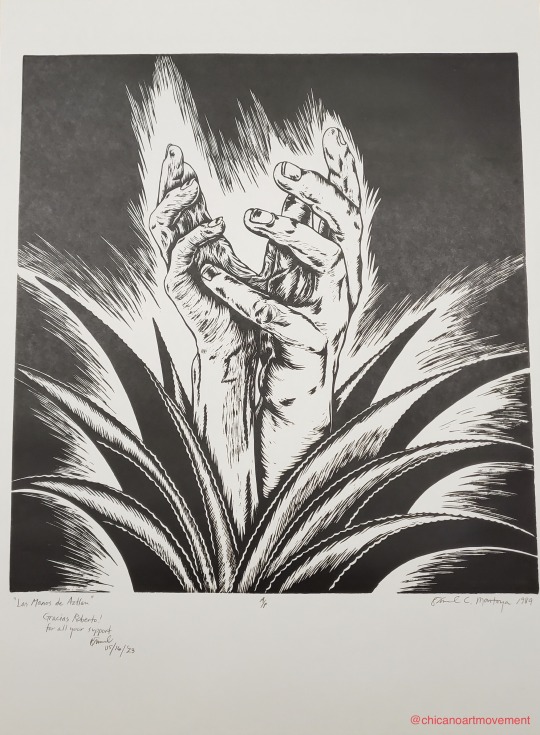
(View of “Las Manos de Aztlán” by Emmanuel C. Montoya, 1989)
When asked about the history and background surrounding the “Las Manos de Aztlán” print, Montoya shared that in 1989 he “was approached by Francisco X. Alacrón, the famous Chicano poet. He was teaching at UC Santa Cruz, at that time, and of course was involved with the Chicano students, at that time. I met him of course in the Mission in San Francisco back then in the ‘80s & ‘70s - very vibrant art community in the Mission at that time. So, he approached me. He’d seen my work and liked my work. He approached me about doing this poster celebrating the Chicano students at UC Santa Cruz. It was the ten year anniversary.”
Emmanuel explained that he featured the maguey at the center of the piece due to la planta’s resilience and adversity against many elements as well as its important symbolization in ancient and contemporary cultures. Montoya happily retold a funny moment of enlightenment when looking at “Las Manos de Aztlán” that “if you looked at the image,” said the artist, “it’s two hands - five and five - which adds up to ten. Of course, I didn’t know that. Somebody else pointed that out to me.” He laughed and continued: “Este so…the idea, of course, is my idea. I thought about the maguey plant which is an important symbol in pre-Columbian/Mexicano/Chicano history and culture. I have the two hands growing from the maguey plant and it, of course, symbolizes their ten years” as a Chicana/Chicano organization on the UC Santa Cruz campus in 1989.

(Detailed view #1 of “Las Manos de Aztlán”)
When asked why the medium of linocut was used, Emmanuel stated that it was his preferred style since he studied specifically printmaking in the woodblock linoleum cut format both at the undergraduate and graduate levels at San Francisco State University (B.A. 1985 and M.F.A. 1991). He explained: “I sort of studied in school but I was also inspired to study to develop my own style, my own interest, in linocut and printmaking. From the tradition and history of printmaking in Mexico. I was very inspired by the work of a number of different Mexicano printmakers in the mid 19th century, the Mexican Revolution. Out of that came so much culture and art and one of those organizations was Taller Gráfica Popular…artist workshop. It was founded in 1935 by Mexicano, Leopoldo Méndez, he along with a number of Mexicano artists and printmakers established this organization TGP [el Taller de Gráfica Popular]. How I can I say this? For me, it was inspiration, it was you know, it was my roots as Chicano artist, as a Chicano printmaker specifically, and I just, you know, did a lot of, how can I say this…research, read, and went down to Mexico…Mexico City…and meet some of those printmakers…Yes, I was…you know, it was my mecca.” He laughed as he recollected his inspiration which has not waivered at all, and has only gotten stronger since his youth.
We inquired more about that trip to El Taller and Montoya was glad to share that “it was such an inspiration…such an opportunity to meet some of those artists in person and trade artwork. And este, in 1985, el Taller was celebrating its 50 year anniversary and so they had a show at Bellas Artes in Mexico City. One of the artists that I specifically meet close to, and became good friends with Alberto Beltran. I met him through another Mexicano artist that was up here [California] in the ‘80s, working with muralists up here, Mexicanos/Chicanos muralists up here. I was introduced to him; Alberto and I became good friends. We communicated, correspondence, and I would send him materials - books, information about the arts as they were happening up here in the Chicano communities. And so, 1984 I got a chance to go down and actually meet him for the first time. And I spent a good time…20 years corresponding back and forth. All those letters and information that he would send me; I saved, I collected, and it is now housed in the Bancroft Library at UC Berkeley [...] He turned me onto all these other artistas: Arturo García Bustos, Alfredo Zalce - was one of the founders of El Taller and he was in Morelia. I had a chance to go out to Morelia and meet Alfredo Zalce. It was so inspiring and it was so historical for me to meet these artists that I had read about and saw their work. It was a delight.”

(Detailed view #2 of “Las Manos de Aztlán”)
Anita further inquired how that inspiration from visiting the artistic mecca of Mexico, El Taller, helped him with his techniques when making the print “Las Manos de Aztlán” for UC Santa Cruz; Montoya responded: “Yes…in 1989, I have been doing printmaking. I studied and did my graduate work in printmaking and my thesis was also in printmaking and actually, I wrote about the connection with Chicano printmakers and with the history and tradition of Mexican printmakers [...] The tradition of Mexican printmakers at that time, at El Taller, it was important to them to create things that reflect their times, you know. And it was work based in realism, you know, something to work with…to…the work that they did that reflected the revolution or reflected their history as Mexicanos, their history as pre-Columbian, Native peoples. It was all so inspiring and of course, for me being here in the Bay Area. I was born in Texas and came to California, came to the Bay Area in 1964. And have been here in the bay Area ever since. Went to school here; got involved in Chicano Art and Chicano Culture, and the Chicano community. A lot of that was inspired by what was happening in other communities across the country, in the midwest, in Texas, in Arizona, in Southern California area. It was all this, how can I say it, birth of activism…very much.”
Activism and resilience are some of the recurring themes within the vast works by Emmanuel C. Montoya - both big and small pieces. Montoya was glad to hear that CHICANO ART MOVEMENT had visited his works in the Bay Area via trips to:
CHICANO ART visits: San Francisco Public Library, Mission Branch 2013
CHICANO ART MOVEMENT visits: SFO Museum at San Francisco International Airport (SFO), California 2014.
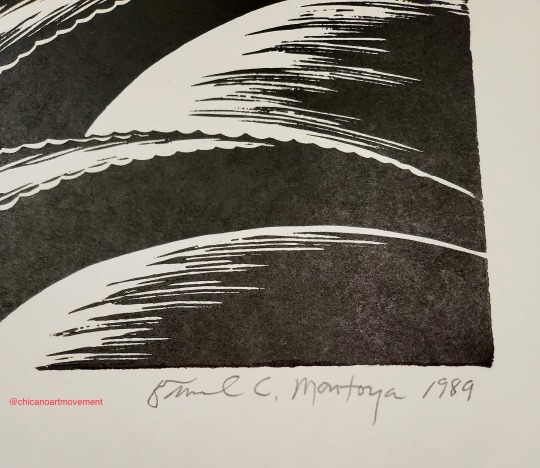
(Detailed view of artist’s signature on “Las Manos de Azltán”)
To close the interview with the great artist Montoya, it was asked if he could share more about the term Apachicano as well as any projects that he was currently working on at his studio, Apachicano Art Productions. Emmanuel stated: “I am Apache and I am Chicano. I guess one day I decided to just put the two together. (Chuckles) My history as an Apache with that culture…many years…a chingado…in the past, I would say that for 40 years or so that I have become aware that I am Apache, I am Native American and what that means and how that’s reflect in the work that I do as an artist, as a print maker [...] I am retired [and] I work out of a studio; I have been for the past 35 years now here in Berkeley. I have produced quite a bit of work.”
During our final exchange, Emmanuel kindly extended an personal invitation to visit him and his taller in Berkeley and we in return, thanked Emmanuel for the honor to interview him and for the opportunity to learn more about him, his trajectory, his community work, and some of the unknown Chicana/Chicano art history.
#emmanuel c montoya#chicano art#bay area#san francisco#uc santa cruz#chicano anniversary#chicano artist#berkeley#texas#linocut#art print#apachicano#california art
5 notes
·
View notes
Text

#virgencita#my art#ink drawing#chicano art#bicpenart#bic pen art#bic pen#ballpointpen#virgen de guadalupe#mine
24 notes
·
View notes
Text

Negativity Attracts, Barbara Carrasco, 1990
Screenprint
26 ¼ in. x 40 in. (66.7 x 101.6 cm)
Smithsonian American Art Museum, Washington, DC, USA
#art#barbara carrasco#1990s#20th century#contemporary art#screenprint#print#smithsonian american art museum#american#chicana#graphic art#graphic design#female artists#women artists#chicano art#chicana art
15 notes
·
View notes
Text

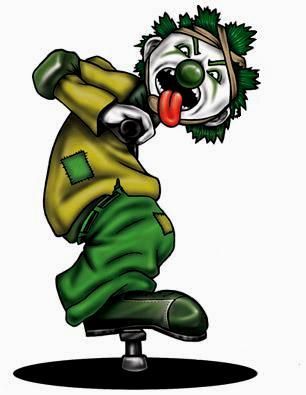

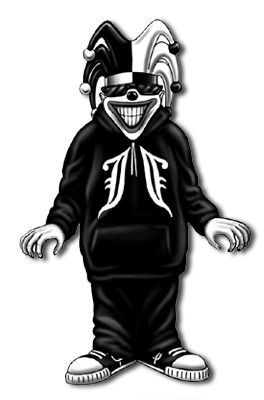
my favorite payasos. art by david gonzales.
24 notes
·
View notes
Text
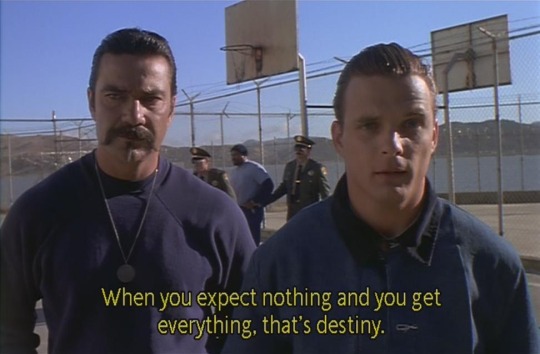
🎧🎶❄️New Music❄️🎶🎧
𝔈𝔳𝔦𝔩 𝔈𝔫𝔱𝔢𝔯𝔭𝔯𝔦𝔰𝔢 - ℜ𝔦𝔰𝔢 𝔘𝔭
youtube
#chicano rap#chola#cholo#chicano art#arte#quotes#memes#onda#mexican#rap#music#evil enterprise#record labels#hiphop#trending#video#funny#tattoo#Youtube
16 notes
·
View notes
Photo
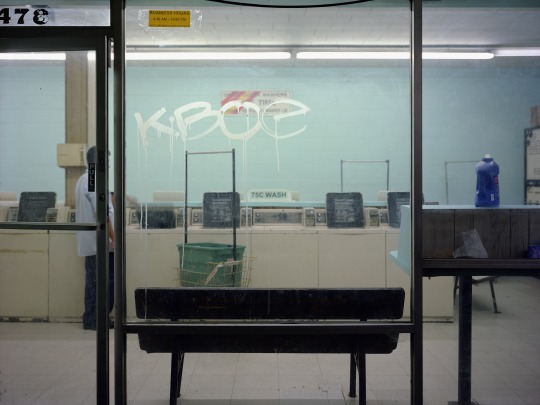
Christina Fernandez, Lavanderia #4, 2002. The survey “Christina Fernandez: Multiple Exposures,” curated by Joanna Szupinska, opens tomorrow, October 1, at the California Museum of Photography. Along with Joanna’s writing about the exhibition, Julian Myers’ essay on Fernandez’s photographs depicting the graffiti-covered windows of East Los Angeles laundromats appears in the exhibition's gorgeous exhibition catalogue.
#christina fernandez#exhibition#art#photography#chicano art#graffiti#joanna szupinska#julian myers#grupa o.k.
118 notes
·
View notes
